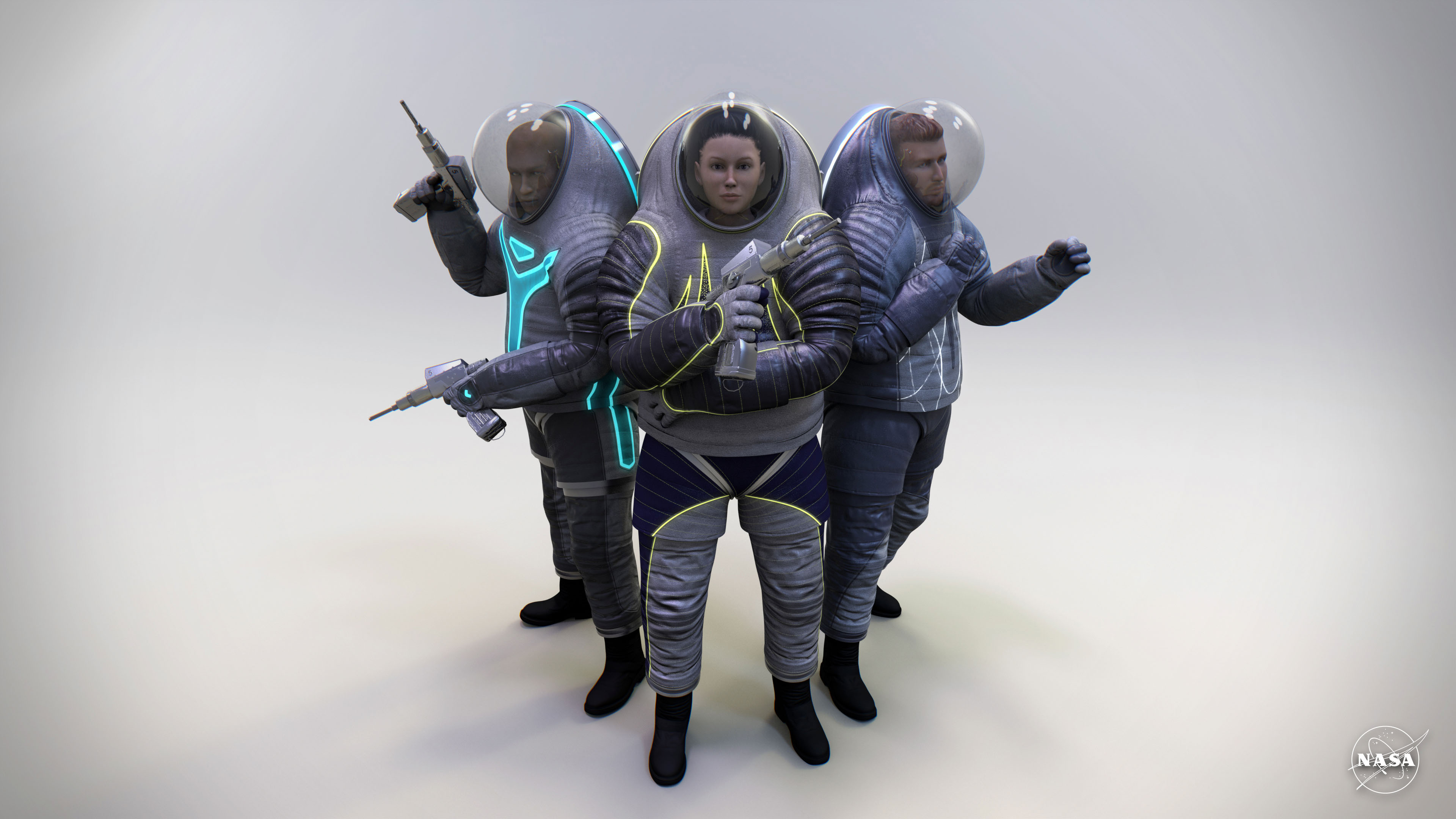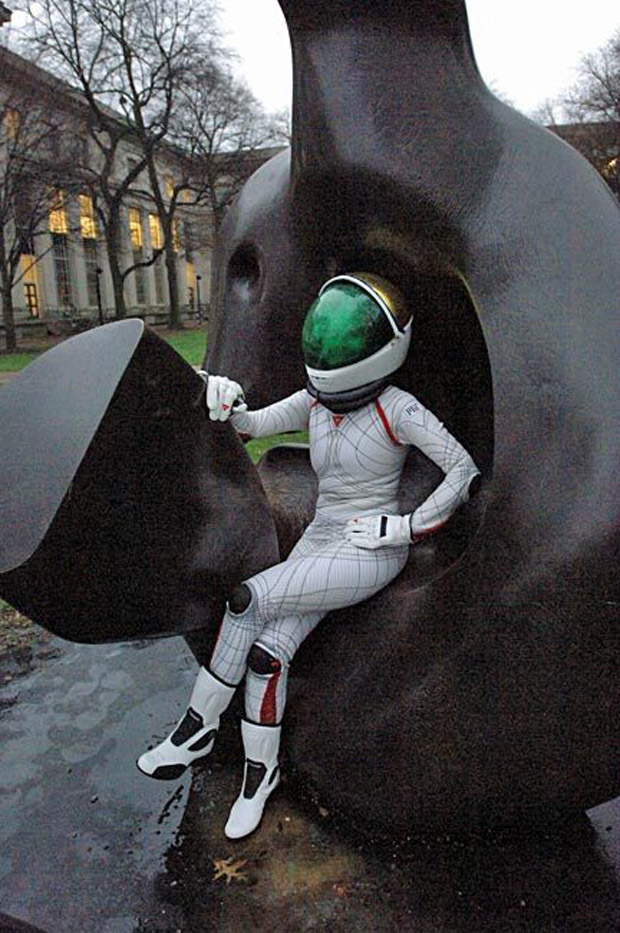Future Spacesuits Should Be Beautiful — and Not Just for Space. Here's Why.

The stereotypical image of an astronaut is shaped by their spacesuit, with its puffy, white body and boxy backpack holding the life-support system.
Dava Newman, an aerospace engineer at the Massachusetts Institute of Technology, wants to change that. She is designing what she hopes will be the next generation of spacesuits — which will give the life-saving devices the bulk and style of something more like athletic or camping equipment.
"We're going to Mars not to sit in the habitat — we're going there to explore," Newman said. "We don't want you to fight the suit. We want you to find life on Mars." [The Evolution of the Spacesuit in Pictures]
That design transition requires a change in the way the suits create pressure on the astronaut, which is done to keep an astronaut's blood liquid and moving throughout the body. (Without enough pressure, it could turn to gas.) For all of spaceflight to date, that pressure has come from filling the spacesuit with pure oxygen, putting the astronaut in a bubble of gas. Newman wants to create that pressure mechanically instead, with a suit that clings to skin.
We spoke with Newman about her research. This interview has been edited for length and clarity.

Space.com: Why did you want to tackle the spacesuit problem?
Dava Newman: My passion is trying to think about how to get people to Mars, so what could I do? What would my contribution be? I love the current [spacesuit] system. I've studied it. To me, it's really the world's smallest spacecraft. As an aerospace engineer, the design challenge is how do you take all the functions of a spacecraft, miniaturize them and put them right around the person? It's an incredibly hard engineering and design challenge. Our current systems that are gas-pressurized shells are fantastic, both from NASA [and from] Russia. But for the last 50 years, we've had people in gas-pressurized suits. They keep them [the astronauts] alive, and they do great work, but they're really coming to the end of their life cycle. So we need new systems, and we have a couple design choices. We can kind of do it the same way and be incremental — not my choice — or say, "How else can we do it?"
Get the Space.com Newsletter
Breaking space news, the latest updates on rocket launches, skywatching events and more!
Space.com: What timeline are you looking for your next steps?
Newman: This year, [20]18, [20]19, we're having some more mock-ups made that will be in a few museum exhibit shows. ... Those are just mock-up suits that look and feel like it. We have big goals for [20]19, [20]20 to really do prototypes that attain our 30 kilopascal [goal], a third of an atmosphere pressure production, so that's where the research continues. We have to implement some active materials, we have to use some functional fabrics, really creating some of our own fabrics and smart fibers. You can carry information; optical fibers are amazing. [You can also provide] a little bit of thermal management — just comfort, heating up, cooling people down. … And I mentioned before the life-support systems, so that's where the research is going. We'd like to prototype these systems to get much higher-fidelity systems that are eventually ready for flight. [How NASA Spacesuits Work: EMUs Explained (Infographic)]
Space.com: What sort of medical implications does your research have here on Earth? You've talked about students you work with at Harvard University who are studying to become aerospace biomedical engineers. What sort of projects have they worked on?
Newman: They love space. We call this "bioastronautics." We specialize in astronaut performance, suits, systems, exercise, countermeasures. … They've had really good medical training, so their interests are in Earth problems and how we can take our technologies, our experiments and perhaps run clinical experiments on rehabilitation, movement, control. The best theses have an aspect that's looking at a medical issue and an aspect looking at a space issue. [Newman described a project with Boston Children's Hospital trying to use spacesuit technology to help children born with cerebral palsy, a condition that affects motion and muscle control.]
They're not walking yet. Their brain is so plastic. Maybe if they go through certain motions and certain motor programs in our little suits — we did make suits for infants and take lots of measurements, because maybe we could help the range of motion — then, when the young person is about 2 years old and they start walking, maybe they would have extended range of motion and better muscle control and better muscle performance. … We're always thinking about how do we miniaturize things, how do we do wearable sensors. … Everything's so expensive to get in space. You don't get to fly a lot of instruments, so when you fly them, you really have to miniaturize them. And when you do, they just have great applications, usually, on Earth, for rural medicine, telemedicine, those kind of uses. That's exciting, because you feel like maybe we can make a difference on Earth.
Space.com: Aesthetics clearly play a role in your designs. Why is that important to you?
Newman:& It's always about teaming [up with others], because engineering, we solve some of the technical questions, the technologies, materials. But, yeah, I always work with designers and artists. It's a lot more fun. You want to wear beautiful things. You want to have a great suit and [one that] looks good. … It doesn't cost any extra money to do it right and do it very aesthetically, and I'm always learning as well from multidisciplinary teams, because bringing people together, they might have a different solution. I come at it usually from an analytical or technical [perspective], and you bring artists together, you bring designers, and they're going to really push us on form, functionality, things like this. So, we just make good teams — and have fun."
Email Meghan Bartels at mbartels@space.com or follow her @meghanbartels. Follow us @Spacedotcom and Facebook. Original article on Space.com.
Join our Space Forums to keep talking space on the latest missions, night sky and more! And if you have a news tip, correction or comment, let us know at: community@space.com.

Meghan is a senior writer at Space.com and has more than five years' experience as a science journalist based in New York City. She joined Space.com in July 2018, with previous writing published in outlets including Newsweek and Audubon. Meghan earned an MA in science journalism from New York University and a BA in classics from Georgetown University, and in her free time she enjoys reading and visiting museums. Follow her on Twitter at @meghanbartels.









